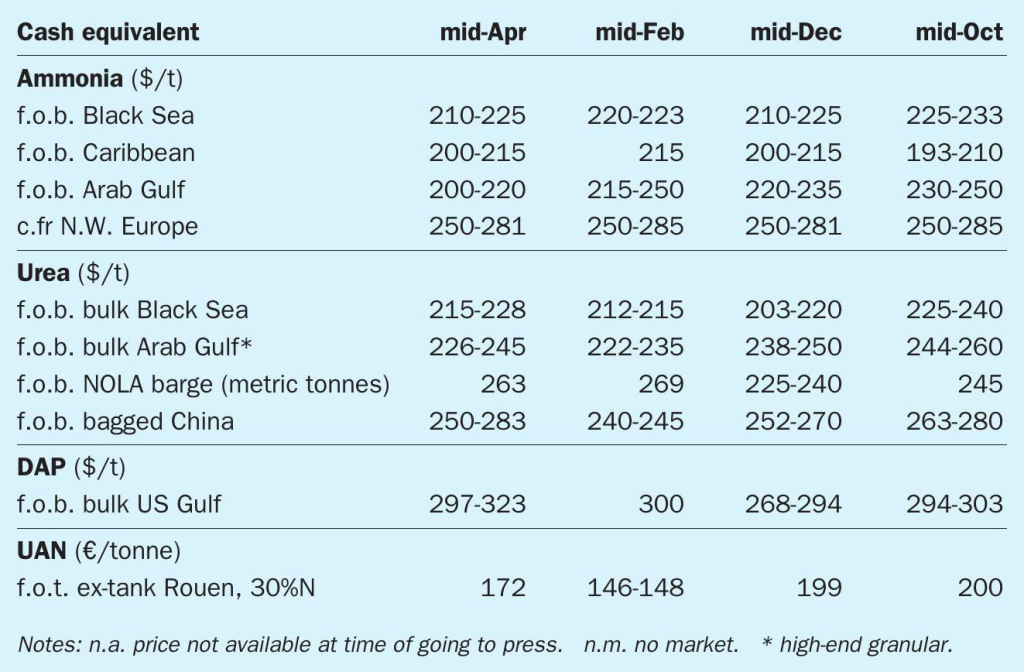Nitrogen+Syngas 365 May-Jun 2020

31 May 2020
Price trends
Price trends
MARKET INSIGHT
Alistair Wallace, Head of Fertilizer Research, Argus Media, assesses price trends and the market outlook for nitrogen.
NITROGEN
The outlook for the global ammonia market has been thrown into uncertainty in March and April. In early March, the market was absorbing the impact of a potential downturn in Asian demand this year because of the emergence of coronavirus. But with the virus’ swift spread around the world and subsequent national lockdowns, ammonia spot demand has been curtailed, most severely in the industrial sector.
Following on from the trend in China in the first quarter, industrial consumers of ammonia throughout the rest of the world are slowly cutting back production. In Europe, these cutbacks are estimated at around 30%, but in other countries, such as Taiwan, downstream demand is plummeting, and industrial plants are being taken offline. However, fertilizer-focused ammonia industries are still operating as they are categorised as key. In the US, the direct application season has been relatively strong and US demand continues at a close-to-normal rate.
Prices are steadily falling, reflecting a building surplus in the near term and reduced demand for the next few months in key markets. Asian prices have fallen by over $65/t since the emergence of coronavirus from $312.50/t c.fr in late-January to $247.50/t c.fr in late-April, although the rate of China’s imports has not fallen sharply, with around 215,000 tonnes discharging at Chinese ports in January-March.

Urea prices peaked in early March around $260-265/t f.o.b. Egypt and the Middle East and have declined since then. Prices fell by about $30/t up to the end of April. There was strong demand for urea for April shipment, particularly from India, Australia, Europe and the US, but this was outweighed by uncertainty created by the coronavirus pandemic.
Overall, nitrogen fertilizer prices have held up better than for other energy-related commodities, partly because the pandemic coincided with peak demand periods in the northern hemisphere. India bought nearly 750,000 tonnes of urea for April shipment, and timely rain in Australia has seen 5-6 spot cargoes of granular urea purchased from the Middle East, southeast Asia and China. US prices remained at a premium to other markets in April, pulling in more urea.
The market is waiting for demand to emerge from other countries for May and is also focussed on likely export prices and volumes from China; lower gas and coal prices mean that Chinese suppliers can be competitive at lower levels than in 2019. Lower demand from the industrial sector on account of reduced economic activity, together with lower feedstock costs, imply falling prices going forward.
END OF MONTH SPOT PRICES
natural gas

n ammonia

urea

diammonium phosphate







